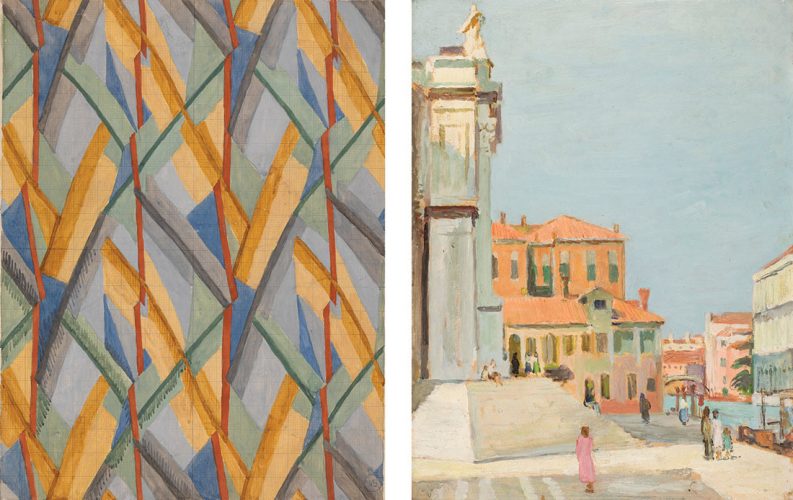Books are not turned out of moulds like bricks. Books are made of tiny little words, which a writer shapes, often with great difficulty, into sentences of different lengths, placing one on top of another, never taking his eye off them, sometimes building them quite quickly, at other times knocking them down in despair, and beginning all over again.”
-Virginia Woolf, “How Should One Read a Book?” (1925)

“Early in March 1915 the couple [Virginia and Leonard] moved to Hogarth House in Paradise Road. This was part of the present Suffield House, at that time divided into two separate residences, situated next to the premises of the North Surrey Squash Rackets Club.
I don’t know when I enjoyed a birthday so much – not since I was a child anyhow. Sitting at tea we decided three things: in the first place to take Hogarth [House, Richmond], if we can get it; in the second, to buy a Printing press; in the third to buy a Bull dog, probably called John. I am very much excited at the idea of all three – particularly the press. I was also given a packet of sweets to bring home” – Woolf, Virginia. The Diary of Virginia Woolf: Volume 1: 1915-1919. Ed. Anne Olivier Bell. New York: Harcourt and Brace Company, 1978.
The move to Hogarth House came at an unhappy and unsettled period in their life, for Virginia was suffering from a severe attack of the mental illness which was to recur at various times during her life. In 1913 she had completed her first novel The Voyage Out (published in 1915). As was the case with each book that she wrote, the work had left her in a state of extreme physical, mental and nervous exhaustion and in September 1913 she attempted to take her own life. By the summer of 1914 she appeared to have fully recovered. In February 1915, however, there was another, more violent recurrence of the illness which this time lasted until about 1917.”
—”Virginia Woolf (1882-1941) and Hogarth House” http://www.richmond.gov.uk/virginia_woolf_and_hogarth_house
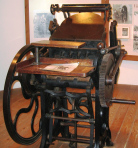
Leonard was anxious to find some hobby or occupation in which he and his wife could engage and which would serve as a relief from her writing, with all its attendant mental stress. On the afternoon of 23 March 1917 Leonard and Virginia Woolf were walking down Farringdon Road in London when their attention was caught by the window display of the Excelsior Printing Supply Company. They had been discussing the possibility of taking up printing for a while, and towards the end of 1916 decided that they would definitely do it. They had even gone as far as enquiring about enrolling at St Bride School of Printing, only to be turned down because courses were only open to trade union apprentices whose numbers were strictly controlled. Nevertheless, undeterred they entered the small printing supplier and explained their plight. They were greeted by a helpful assistant in brown overalls who convinced them that with the aid of a 16-page booklet they would be able to teach themselves all they needed to know to get started. So, for the sum of £19 5s 5d the Woolfs became the proud owners of a small hand-printing press, some Old Face type and all the other necessary paraphernalia to begin their printing endeavour. The printing press was duly installed on the dining room table at their home Hogarth House, which gave the Press its name.

There were a number of reasons why the Woolfs were keen to start printing. In his autobiography, Leonard stated that he wanted a distraction for Virginia to give her a break from the intellectual effort of writing. Virginia had already suffered a number of breakdowns, and Leonard felt the occupation of printing would provide a therapeutic respite. Despite both Leonard and Virginia’s enthusiasm for printing, the Hogarth Press was only ever meant to be a hobby; it was not intended to grow into a full-time publishing enterprise. In her late teens Virginia had developed an interest in bookbinding taking formal instruction from a Miss Power in 1901. Although bookbinding was only a pastime, Virginia had taken it seriously and was proud of the results and the skills she’d acquired which would benefit their new press. The Woolfs decided that the Hogarth Press would concentrate on small and experimental publications likely to be of no interest to commercial publishers. A further important consideration for acquiring the press was that Virginia was hypersensitive to criticism, and the process of submitting work to a publisher and publisher’s reader for assessment filled her with horror and misery. Owning their own press would give them the freedom to publish whatever they liked. Virginia’s first novel The Voyage Out had been published in 1915 by Duckworth’s, the publishing company of her half-brother Gerald Duckworth. Duckworth’s reader, Edward Garnett, had written an enthusiastic report on the novel, but even this and the family connection could not alleviate Virginia’s anxiety. Unfortunately, Virginia’s second novel Night and Day (1919) was also committed to Duckworth’s, but her third novel, Jacob’s Room (1922) was published by the Hogarth Press, giving her the freedom to continue developing her experimental style.
— Heyes, Duncan. “The Hogarth Press.” 2016. https://www.bl.uk/20th-century-literature/articles/the-hogarth-press
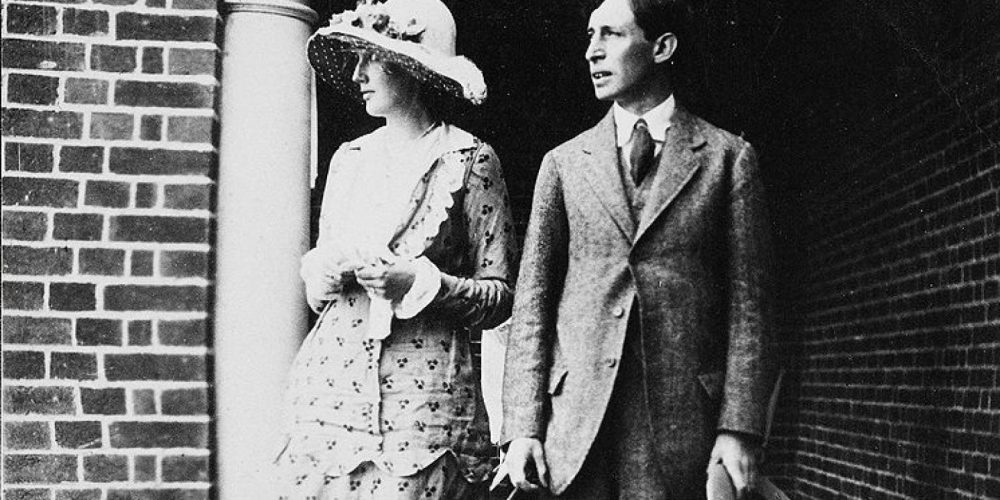
“The story of the Press is, in a way, the story of their marriage: Leonard’s anxiety for her health, their mutual interests, their areas of division, and, reflected in the list, their cultural and political life. They instituted themselves as a couple on the title page of their first publication, two stories ‘written and printed by Virginia Woolf and L.S. Woolf.
By publishing together, they signalled that the Press was a joint enterprise and a vehicle for their own writing. For Leonard, the story was a signpost pointing down a road he would not take – as a fiction writer, as a Jewish writer. But for Virginia, it ‘marked’ a completely new direction, the beginning of a new form and a new kind of writing.”
— Lee, Hermione. Virginia Woolf. Random House Inc., 1996.

The first book was issued from this modest equipment in July 1917. It was a 32 page pamphlet entitled Two Stories containing Virginia’s story “The Mark on the Wall” and one by her husband called “Three Jews.” The title page bore the imprint “Hogarth Press, Richmond 1917”. Thus began the life of a publishing house which was to become world famous.
— “Virginia Woolf (1882-1941) and Hogarth House” http://www.richmond.gov.uk/virginia_woolf_and_hogarth_house
“Two Stories, although not without its faults, was a good first attempt, and it was clear that a lot of effort had gone into making the publication attractive. The book was type set, printed, stitched and bound by Leonard and Virginia in an edition of 150 copies. Most of the copies were sold to friends and acquaintances. As their confidence grew, the Woolfs started to sell their books by subscription. They compiled two lists of subscribers, group A, those who would buy all the Hogarth Press publications, and group B, who could be notified of new publications and would then select the titles they wanted.
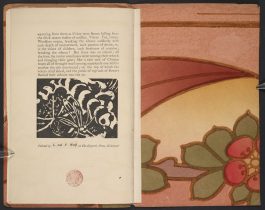
A key moment for the Hogarth Press came in 1919, when it published Virginia’s Kew Gardens a short story which has been likened to an impressionist painting. The story follows four pairs of people on a day in July as they drift, without aim, through Kew Gardens….the book was favourably reviewed in the Times Literary Supplement leading to the Woolfs being deluged with orders. It would have been impossible to satisfy these orders using a handpress printing a page at a time so they decided to use a commercial printer, Richard Madley, who printed a second edition of 500 copies. From now on the Woolfs would use commercial printers for larger publications, but in tandem they would continue to handprint smaller works up until 1932.
— Heyes, Duncan. “The Hogarth Press.” 2016. https://www.bl.uk/20th-century-literature/articles/the-hogarth-press
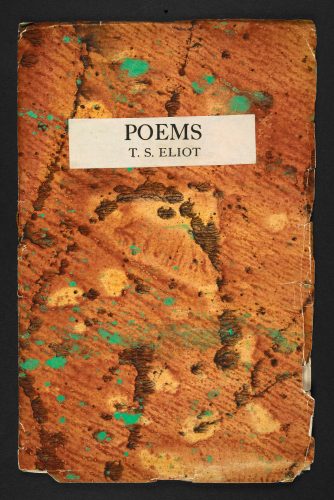
In 1921 they bought a larger printing press and increased their activities to the extent that the Press was transformed from a hobby to a largely commercial publisher. The subscription system of selling books was discontinued, and they started selling books directly to booksellers…the expansion of the company required more help. The Woolfs took on a succession of assistants and managers over the years, none of whom lasted particularly long. Those who worked
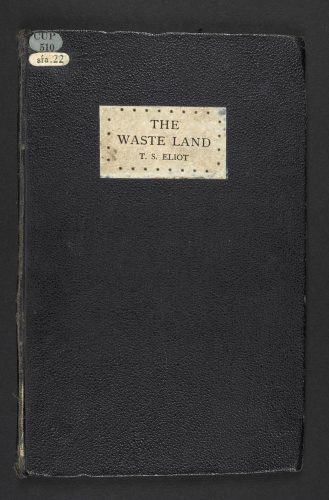
at the Press included Barbara Hiles, Alex Sargent-Florence (who lasted only one day) and a succession of young men including Ralph Partridge, George Rylands, Angus Davidson, Richard Kennedy and perhaps most significantly, John Lehmann. Lehmann first joined the Press in 1931 but left the following year. He then returned six years later in 1938 as a partner and general manager buying out Virginia’s share in the concern. Under his influence the Hogarth Press
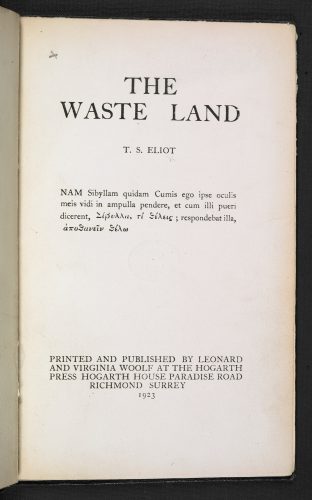
published works by an emerging new generation of poets and writers such as Stephen Spender, W H Auden, Julian Bell, Cecil Day Lewis and the novelist Christopher Isherwood. Leonard and John Lehmann ran the press for eight years but increasingly could not agree on the direction it should take. The disagreements came to a head in 1946 when Leonard decided to terminate the partnership, buying out John’s share which he then sold to Chatto and Windus.’
— Heyes, Duncan. “The Hogarth Press.” 2016. https://www.bl.uk/20th-century-literature/articles/the-hogarth-press
“Like most things in life, though, Woolf wavered between liking and disliking Richmond…even though Woolf described Hogarth House in one of her diaries as “a perfect house, if ever there was one,” by June of 1923 she was anxious to move back to London. In a diary entry that month, she wrote, ‘we must leave Richmond and set up in London.’
In March of 1924, the Woolfs left Richmond to move back to London. They set up housekeeping and publishing at 52 Tavistock Square.”
— “The Woolf’s in Richmond – Then and Now.” https://bloggingwoolf.wordpress.com/tag/virginia-woolf-in-richmond/
“When the Woolfs moved from Hogarth House, Virginia wrote in her diary:
Nowhere else could we have started the Hogarth Press, whose very awkward beginning had rise in this very room, on this very green carpet. Here that strange offspring grew and throve; it ousted us from the dining room, which is now a dusty coffin; and crept all over the house” – Woolf, Virginia. The Diary of Virginia Woolf: Volume 2: 1920-1924. Ed. Anne Olivier Bell. New York: Harcourt and Brace Company, 1978.
Woolf’s comparison of the dining room to both a womb and a coffin, with the press as its growing child, conveys her emotional attachment to the press. After Leonard left editing the Athenaeum, Virginia wrote: ‘we are now supporting ourselves entirely by the Hogarth Press, which when I remember how we bought five pounds of type and knelt on the drawing room floor ten years ago setting up little stories and running out of quads…makes my heart burst with pride'”
— “Hogarth Press.” https://modernism.coursepress.yale.edu/hogarth-press/

Works Cited
Heyes, Duncan. “The Hogarth Press.” 2016. https://www.bl.uk/20th-century-literature/articles/the-hogarth-press
Lee, Hermione. Virginia Woolf. Random House Inc., 1996.
Svendsen, Jessica. “Hogarth Press.” https://modernism.coursepress.yale.edu/hogarth-press/
“Virginia Woolf (1882-1941) and Hogarth House.” http://www.richmond.gov.uk/virginia_woolf_and_hogarth_house
Woolf, Virginia. The Diary of Virginia Woolf: Volume 1: 1915-1919. Ed. Anne Olivier Bell. New York: Harcourt and Brace Company, 1978.
Woolf, Virginia. The Diary of Virginia Woolf: Volume 2: 1920-1924. Ed. Anne Olivier Bell. New York: Harcourt and Brace Company, 1978.


